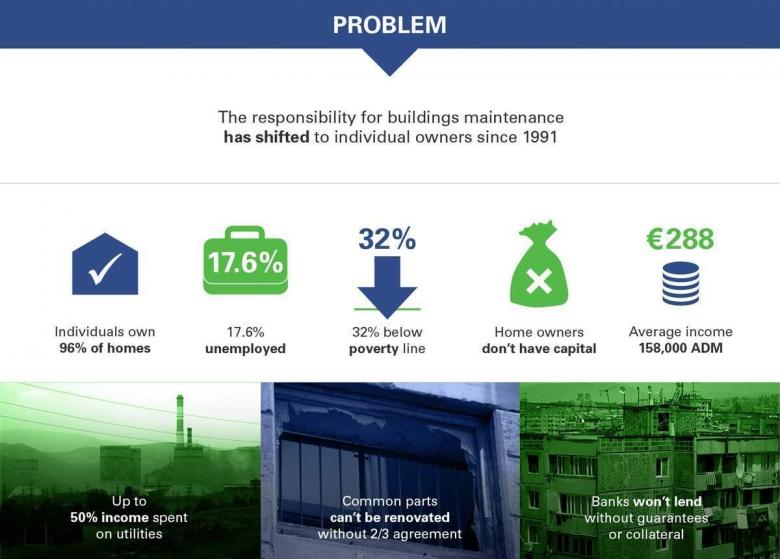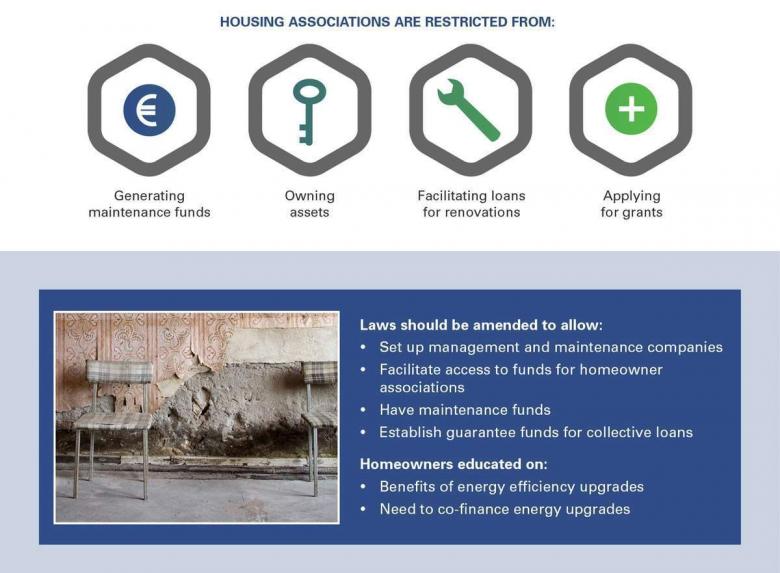A Makeover for Yerevan
Improving the energy efficiency of apartment blocks in Armenia.
Armenia’s capital city, Yerevan, is a testimony to its Soviet past. The city’s skyline is defined by a sea of grey edifices—five to nine-story apartment blocks—constructed to Soviet specifications. It’s a place that looks like it needs a makeover because since gaining independence in 1991, there’s been little visible maintenance to the city’s housing stock which has sharply deteriorated.
In less than 24 years, Armenia has privatized 96% of its housing stock—one of the fastest transformations in the world. Unfortunately, it has also caused many of the city’s current housing problems.
During the Soviet era, the state took care of building maintenance. With independence, that was transferred to the new generation of homeowners. It was a shock. When they got the right to own their own home, they also took on the task of upgrading and maintaining them. It was something they weren’t prepared for.
The real sticking point was who was responsible for the common areas in apartment blocks. Everyone was prepared to take care of their properties up to the door mat at the entrance, but almost no one seemed to be doing anything about maintaining and repairing shared spaces, changing the light bulbs, or ensuring broken windows were fixed.
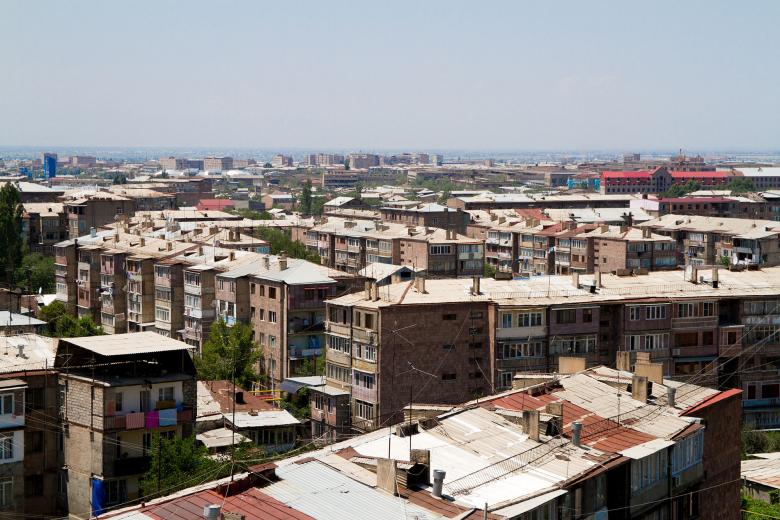
Cooperating for the common good
In a few buildings, residents were prepared to go further and help with the maintenance of the property. Their philosophy was that if the building looked better for everybody, it would look better for them as well. After a while these like-minded people joined forces and began organizing themselves into homeowner’s associations (HOA).
Sargys Kyrkjyan is the head of “Zartonk” (which means ‘revival’ in Armenian), one such homeowner association. Sargys and his team of five people take care of a total of 23 buildings in Yerevan. They have a small office in one of the buildings where the tenants come to pay the building maintenance and garbage collection fees.
“We wanted to do more. We wanted to renovate the buildings, borrow from the banks, represent tenants and transform the buildings,” says Sargys. But current national laws limited our ambitions. We were frustrated because banks were very reluctant to lend money. “The two main issues were credit worthiness and lack of collateral,” says Seda Arzumanyan, Habitat for Humanity Armenia’s resource development manager. “Even though they are legal entities, the homeowners associations do not own any assets or property and banks require personal guarantees of the tenants.”
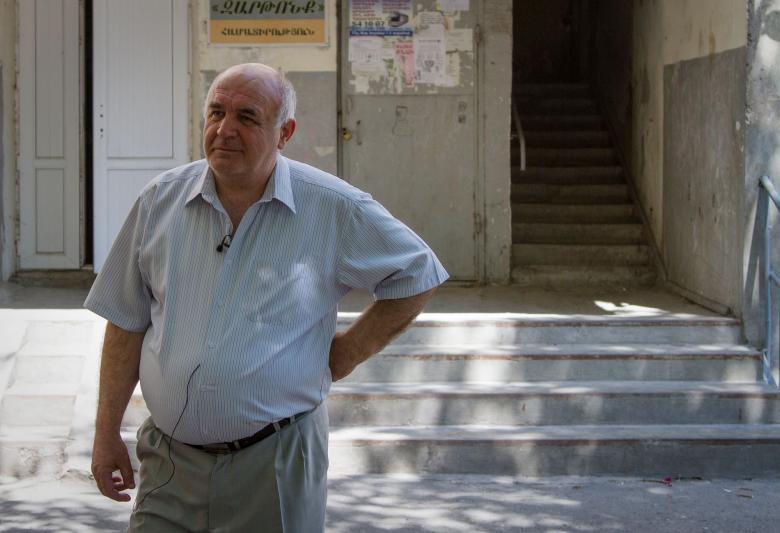
That changed in 2014 when Habitat Armenia and Zartonk teamed up. In 2009, drawing on its experience in Kyrgyzstan and Tajikistan, Habitat Armenia developed a pilot project for maintenance of the common spaces that needed to be renovated.
Supported by Habitat Armenia, the homeowners association managed to secure loans and soon the common spaces were repaired. As part of the Habitat Armenia project, Zartonk applied for loans to renovate and upgrade two of its buildings and received loans from the bank and a 30-40% subsidy from the Yerevan municipality with a repayment period of three to five years. According to Seda, by the end of August 2015, 11 buildings have been financed and 533 families have benefited.
Gohar Bayatyan lives on the seventh floor in a one-bedroom flat in one of these Soviet-style buildings with her disabled mother. When she bought her flat in 1978 it was in bad condition. “It was grey and dirty,” she says, “It was so cold you could feel it when you touched the door. Now, it’s dry and you can feel the warmth.”
While the homeowners association fixed the open windows on each floor and renovated the previously unkempt corridors, there’s still more work to do in Gohar’s building. The roof is leaking and the walls have deteriorated. Gohar would love the walls to be repaired and insulated. She says the walls are so thin she can hear the birds knocking on the wall of the living room. “One day,” she says laughing, “they will knock a hole in the wall and become my tenants.”
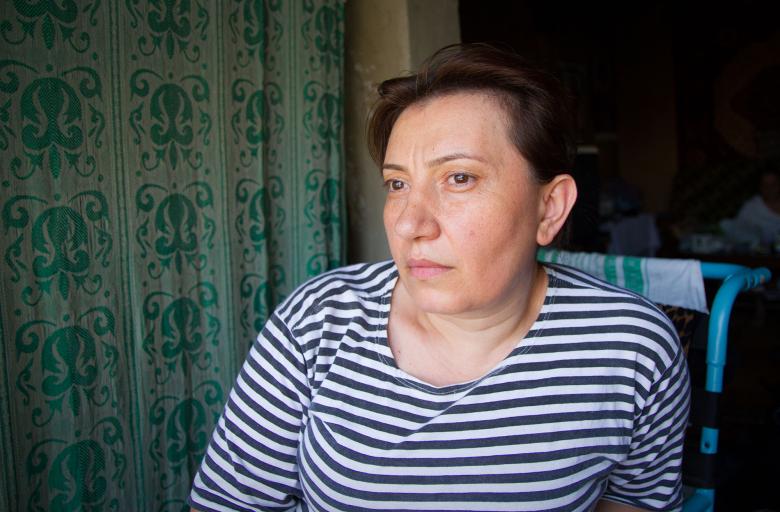
Stumbling blocks remain
The most common problem—the ability to raise additional revenue for repairs from its owners—is still hampering renovations. It turns out that many of Armenia’s diaspora population of about ten million own property in the country. As a local saying goes, “the sun never sets on the Armenian Diaspora.”
In Gohar’s case, only six of the 54 apartments in her block are occupied by their owners. The remaining 48 are owned by absentee landlords many of whom live abroad and are part of the diaspora. In order to make large-scale changes, such as cladding and insulating the walls, a majority of owners must agree to the changes. This is difficult to obtain when many of them live abroad. According to Law on Condominium and Residential Building Management, the decisions regarding renovation and reconstruction of buildings should be made by at least two-thirds of the homeowners of the building.
There are other problems as well. Astghane Pasoyan, senior Programs Managerat the Alliance to Save Energy, knows them all. Astghane’s organization works closely with Habitat Armenia and has prepared recommendations for the relevant government ministries, advocating for changes to the laws which she argues make maintenance of residential buildings slow, inefficient and complicated. “The range of legal barriers is too much to bear,” she says. “No one knows the condition of the buildings. For 25 years no one kept any records so we don’t know what the situation is like.”
Habitat Armenia Residential Maintenance and Energy Efficiency Program has already helped get financing for 11 buildings, helping 533 families.
A way forward
Astghane would like private sector companies manage the buildings. She believes banks would have more confidence in them and find them easier to deal with. She also feels private building managers would deal more effectively with absentee flat owners on more substantial and costly building renovations. The Ministry of Urban Development has positively responded to these suggestions.
To date, the Habitat Armenia Residential Maintenance and Energy Efficiency Program has helped get financing for 11 buildings and helping 533 families. Over the next year, Seda plans on improving the maintenance and energy efficiency of at least 20 more residential buildings, positively affecting almost 2,000 more people. But that’s not all. Habitat Armenia is organizing public awareness campaigns and will follow up with the recommendations on the law of the residential buildings management and maintenance.
It looks like the days of the grey buildings in Armenia might be numbered.
How to improve energy efficiency in Armenia?
